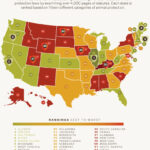The silent cries of animals resonate within the hearts of those who choose to listen, evoking a call to action against the myriad forms of cruelty inflicted upon them. Reporting someone for animal cruelty is not merely a legal obligation; it is a moral testament to one’s integrity and empathy towards our voiceless companions. Understanding the complex landscape of legalities and ethical responsibilities surrounding this issue is essential for anyone wishing to become an agent of change.
Animal cruelty is an insidious epidemic, lurking beneath the veneer of society. It manifests in various abhorrent forms: neglect, physical abuse, and even commercialization of suffering through exploitative practices. The cornerstone of any intervention lies in recognizing its occurrence and having the courage to act. So, how does one navigate the labyrinth of reporting such a grievous offense? Let’s deconstruct the process step by step.
Recognizing the Signs of Animal Cruelty
Before delving into the reporting mechanisms, the first step involves discerning the kinds of behavior that constitute animal cruelty. This includes, but is not limited to, physical abuse—such as hitting, kicking, or otherwise inflicting pain—and neglect, which manifests as failure to provide adequate food, water, shelter, or medical care. Each instance of cruelty can be viewed as a brush stroke in a grim portrait, depicting a life laden with suffering.
Other signs may encompass animals being tied up for extended periods, living in unsanitary conditions, or exhibiting fear of humans. When these signs are perceived, they should act as a clarion call. Individuals must recognize their responsibility to act when they bear witness to such degradation of life.
Documenting Evidence
Once the signs are recognized, the next imperative step is to gather evidence. This can be compared to assembling pieces of a puzzle, where each fragment contributes to revealing the bigger picture. Take photographs of the animal in question, capture the conditions in which it resides, and, if possible, document dates and times of your observations. Written accounts can provide corroborative narratives of the cruelty witnessed.
Witness testimonies can also serve as powerful tools in substantiating claims of cruelty. If others have observed the same behavior, getting their statements can fortify your report. In situations where immediate action is warranted, such preliminary steps might seem cumbersome; however, they are essential for creating a solid foundation for any claims made.
Understanding Local Laws and Regulations
Every jurisdiction has its own set of laws governing animal welfare, intricately woven into the legal fabric of society. Familiarizing oneself with these statutes is akin to understanding the boundaries of a vast landscape. Each state or municipality may have different definitions of cruelty and varying protocols for reporting. A cursory review of local ordinances can illuminate the path ahead.
In many areas, local animal control agencies, law enforcement, and humane societies carry the mantle of legal enforcement. Conversely, some regions may delegate the responsibilities to non-profit organizations dedicated to animal welfare. Understanding who holds this authority is crucial for ensuring that reports are directed correctly.
Reporting to the Appropriate Authorities
With evidence in hand and an understanding of local laws, the act of reporting can commence. Contacting the appropriate authority can feel daunting, but it’s essential to approach it methodically. Animal control officers are trained to handle such cases, and they often possess the resources to intervene effectively. When reporting, be as detailed as possible, supplying all relevant information accrued during your investigation. Painting a vivid picture will aid in transforming your report from mere words into a harrowing reality that demands attention.
In cases involving immediate danger to an animal, don’t hesitate to contact local law enforcement. They have the power to take urgent action on behalf of the animal ensnared in a situation of peril. Explain the urgency of the situation succinctly, ensuring that the gravity of the findings does not get lost in translation.
Following Up and Providing Support
The resolution of a report is often a sluggish process, enveloped in the complexities of bureaucratic procedures. However, persistence is key. Consider following up on the report to ensure it has not been relegated to the shadows of neglect. Maintaining contact with the agency involved demonstrates commitment to the cause and ensures that the plight of the animal remains at the forefront of their considerations.
Moreover, exploring ways to support local animal welfare organizations can amplify the impact of your efforts. These organizations often require volunteers, donations, and advocates to help foster a kinder environment for animals across the community. Uniting with likeminded individuals engenders a sense of camaraderie, creating a formidable force against the relentless tide of cruelty.
Educating Others and Sparking Change
Ultimately, reporting animal cruelty is not simply a procedural act; it serves as a clarion call for societal change. Spreading awareness, educating oneself and others, and fostering discussions surrounding the ethical treatment of animals can erode the foundations upon which cruelty thrives. Transforming ignorance into knowledge and apathy into activism can collectively reshape societal norms.
In conclusion, the journey to report someone for animal cruelty is fraught with complexities, yet it is a vital endeavor steeped in moral obligation. Each action taken creates ripples, influencing not only the lives of animals suffering in silence but also cultivating a culture of compassion within society. As stewards of this planet, it is incumbent upon us to ensure that the chorus of the voiceless is heard, forging a future where cruelty is eclipsed by kindness.








